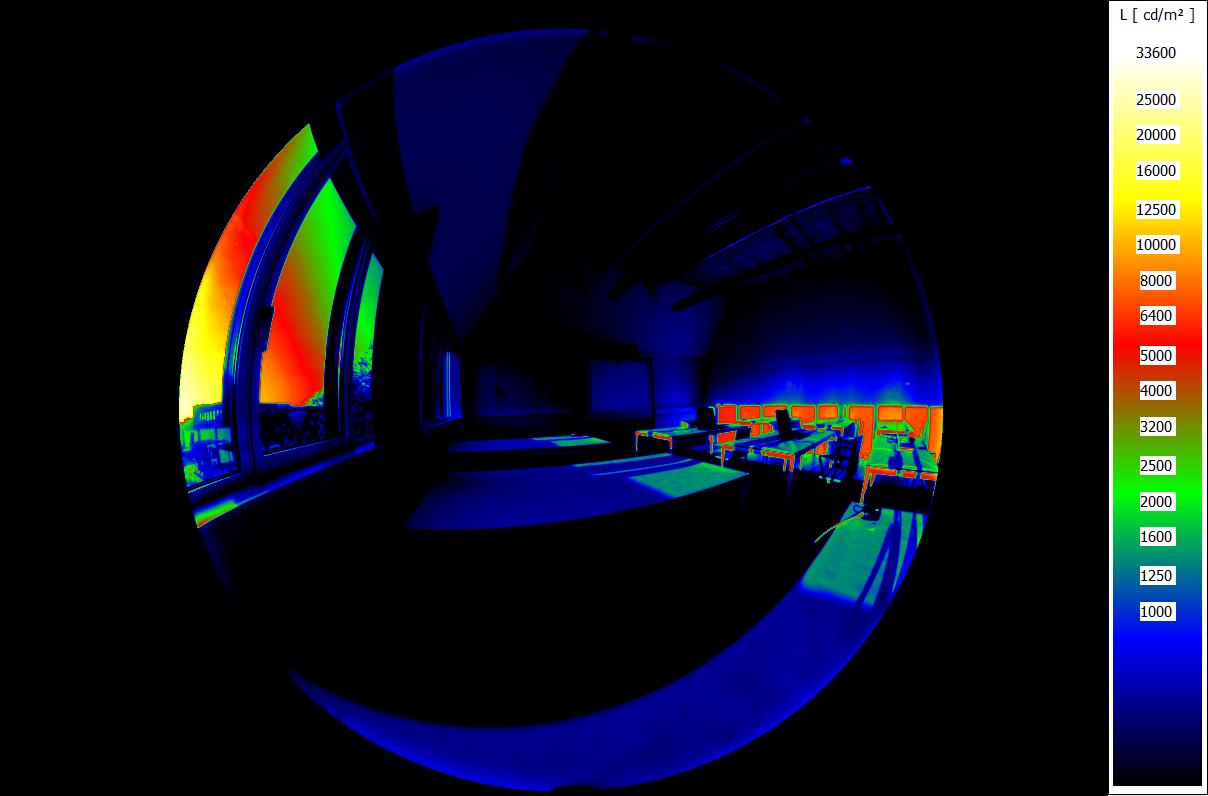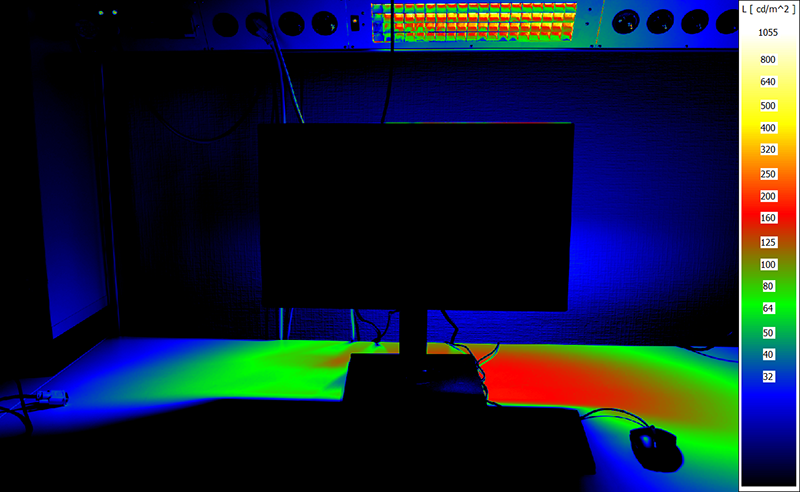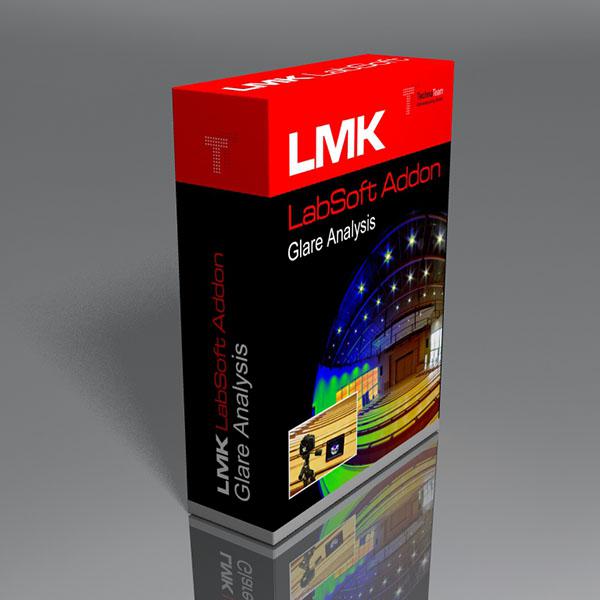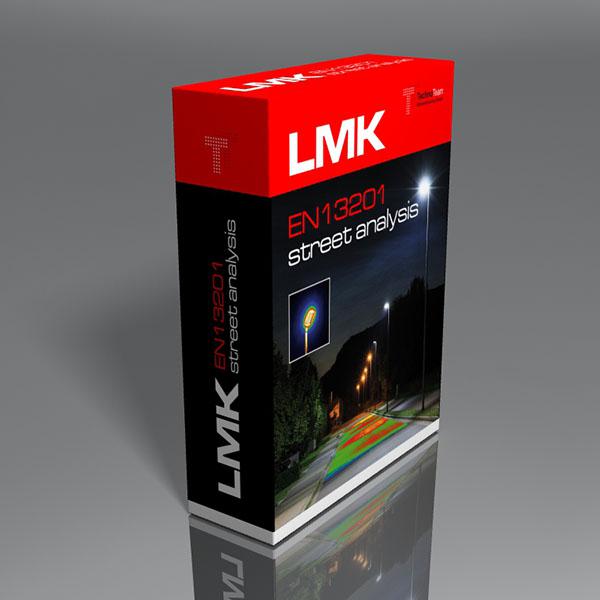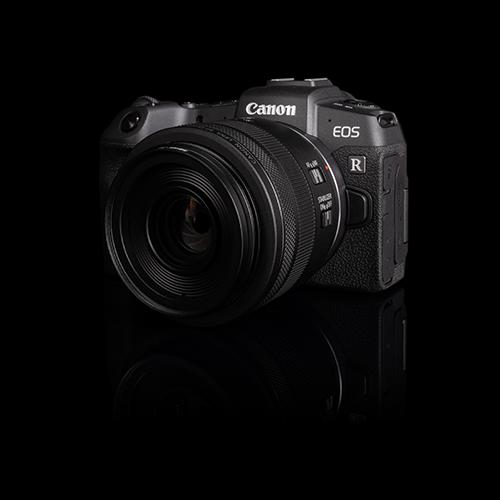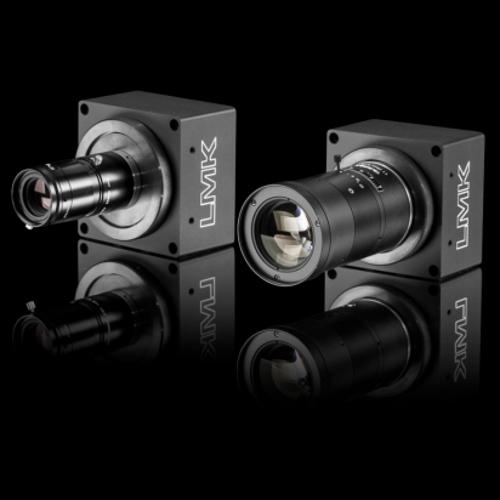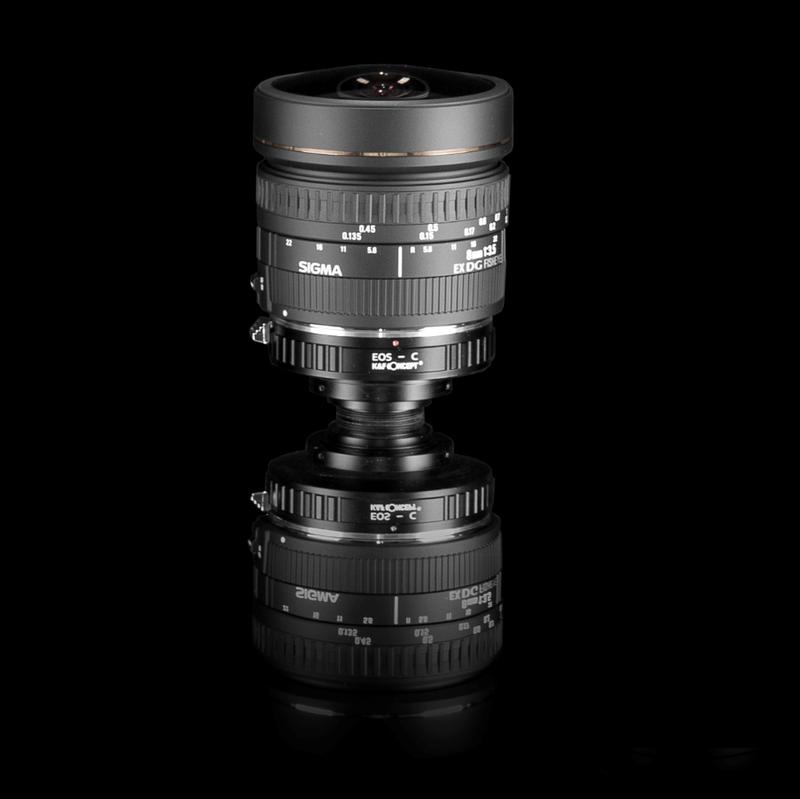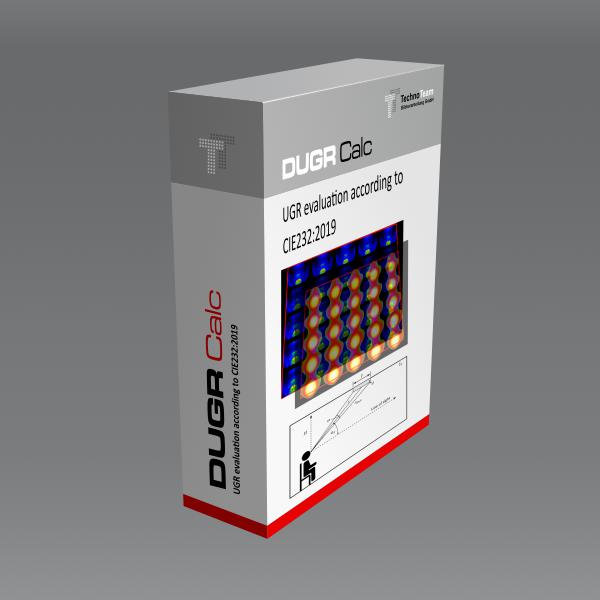Glare describes the reduced visual perception of differences in brightness, or in other words, of contrasts.
Not only is glare disruptive to affected persons, but it can also, under certain circumstances, reduce perceptibility to such an extent that it can result in a risk.
Glare assessment is thus a crucial means of improving ergonomics and safety in visual tasks.
A distinction can be made between daylight glare and artificial light glare. Different metrics have been introduced to evaluate glare depending on the lighting situation and visual task. Glare must always be considered spatially. Therefore, using a spatially resolved light measurement system for glare evaluation is the optimal solution.
Daylight glare
Daylight glare is the term used to describe glare caused to a greater or lesser extent by direct exposure to sunlight or its reflection.
Daylight glare can be caused indoors, for example, near windows at workplaces or by daylighting systems.
Outdoors, disturbing daylight glare can be caused, for example, by the reflection of sunlight from building facades, photovoltaic systems, or other artificially created surfaces.
For its evaluation indoors, various metrics exist, such as the DGP and normative in EN 17037. Outdoors, there are no legal or normative methods for evaluating daylight immissions, for example, caused by building facades.
Artificial light
Glare caused by artificial lighting occurs outdoors wherever night is turned into day. This applies to all situations where natural light is insufficient to perform the existing visual task safely. For example, the illumination of traffic routes (roads, tunnels, sidewalks, bicycle paths), sports venues (stadiums, sports fields), or outdoor workplaces (construction sites, agriculture).
For indoor areas, the UGR value is used as a metric. The EN 12464 standard for indoor workplaces is used here. Metrics used outdoors are the GR value and the threshold increase according to the TI value method. Here, the EN 13201 defines the standard for road traffic.
Measurements are made of light sources' luminance and luminance distribution indoors and outdoors. Another measured quantity is the illuminance on the surfaces used for the visual task.
Vertical illuminance at the eye is also an input variable in many glare metrics. Spatially resolved luminance measurement cameras with high dynamic range can measure these quantities.
In addition, information on the location and geometric size of the light sources is always necessary to determine glare levels. These data must either be recorded independently of the photometric measurement or can simply be measured together with the photometric measurement variables in a measurement image.
Our solution
TechnoTeam has several LMK products for this task. These are the LMK 6 models and the LMK mobile. In addition, TechnoTeam provides a software add-on that can be used for a standardized evaluation according to the UGR and DGP evaluation methods. Evaluations currently not subject to their own metrics can be performed intuitively with the included LMK LabSoft. The required statistical tools are included as part of the LMK LabSoft scope of delivery. For indoor measurements, the prerequisite is an LMK measuring system in conjunction with a wide-angle lens.
RELEVANT PRODUCTS
RELEVANT PUBLICATIONS
Glare assessment for research and development of measurement methods
Przeglad Elektrotechniczny
Glare is one of the most important parameter of lighting quality. Despite the passage of time from the beginning of glare research, no standard of conducting laboratory experiments was proposed. In the article the review of solutions related to glare assessment is presented. The method of conducting research on glare is also described. The authors pay attention to the most important aspects in the methodology of glare assessment for the experimental research on glare and glare assessment based on UGR measurements. The tests of the new algorithm for UGR calculation is presented — algorithm for precise identification and extraction of glare source area from HDR image.
Authors: D. Sawicki; A. Wolska; T. Porsch
Ist eine objektive Beschreibung der Störempfindung bei künstlicher Beleuchtung möglich?
LICHT 7/8 2015, p. 70-74
Die visuelle Erfassung von Information durch das menschliche Auge kann durch helle Lichtquellen gestört werden. Diese Effekte werden unter dem Sammelbegriff der Blendung zusammengefasst. In diesem Beitrag wird diskutiert, ob zum einen die Simulation und Vorhersage eines belastbaren Blendungsurteils und zum anderen die messtechnische Überprüfung einer realen Beleuchtungssituation anhand der vorhandenen Messdaten, Messmittel und Messmethoden überhaupt möglich sind. Dabei wird auf aktuelle Arbeiten zur messtechnischen Bewertung von subjektiven Blendungsurteilen in Innenräumen Bezug genommen.
Authors: T. Porsch, C. Funke; C. Schierz; F. Schmidt
Measurement of the Unified Glare Rating (UGR) based on using ILMD
Proceedings of the 28th Session of the CIE, Manchester; Vol. 1
Imaging luminance measuring devices (ILMD) are widely used in different fields of application. The assessment of glare caused by sun light and technical lighting installations for outdoor and indoor applications has meanwhile become reality. Measuring the discomfort glare for artificial indoor lighting installation is a fixed requirement of current standards. The aim of this study is to develop a simple and very well suitable software algorithm to fulfil those requirements by using the ILMD measuring technique comfortably. This paper also includes a comparison of currently existing equations for the discomfort glare regarding their technical requirements to be met by the ILMD and also the validation of new ideas and methods for analysis and evaluation. Keywords: Unified Glare Rating (UGR), Imaging Luminance Measuring Device (ILMD), discomfort glare
Authors: T. Porsch, C. Funke; C. Schierz; F. Schmidt
Medição de luminância por meio de imagens para avaliação do ofuscamento
Eletricidade Moderna, Brasilien, März 2015, S. 114–121
A medição do incremento limiar, ou seja, da perda de visibilidade causda pelo ofuscamento, será uma exigência das normas futuras. Atualmente, o ofuscamento causado por instalaçoes de iluminação artificial ou plea luz natural já tem sido avaliado tanto em aplicaçoes internas quanto externas. Exte artigo descreve uma ferramente de software que utiliza dispositivos de medição de luminância por meio de iamgens para medir o incremento limiar.
Authors: T. Porsch; A. Walkling; A. Überschär; C. Schierz; F. Schmidt
Einsatz von bildgebenden Leuchtdichtemesskameras bei der Bewertung von Blendungssituationen
Licht 2012 : 20. Gemeinschaftstagung, 11. bis 14. September 2012, Technische Universität Berlin ; Tagungsband. - Berlin : LiTG. - 2012
Über die Möglichkeiten der Bestimmung von Blendungskennzahlen mit Hilfe von bildauflösenden Leuchtdichtemesskameras (LMK) wurde schon mehrfach berichtet /7/ /10/ /11/ /12/ /13/. Inzwischen sind LMK's weltweit Stand der Technik und werden von mehreren Herstellern in unterschiedlichen Konfigurationen angeboten. Aktuell auf dem Markt angebotene LMK's besitzen ähnliche Eigenschaften, wie punktweise messende Leuchtdichtemesser der Klasse B, nach DIN 5032 Teil 7. Bei der Überarbeitung der LiTG Schrift 12.3 /14/ im vorigen Jahr und bei der derzeitigen Überarbeitung der LAI /1/ wurden Hinweise zur Nutzung von LMK's aufgenommen. Deshalb und auf Grund der in den letzten Jahren erfolgten Verbesserung der technischen Parameter von LMK's sollen hiermit erneut deren Einsatzmöglichkeiten zur Bestimmung von Blendungskennzahlen vorgestellt werden.
Authors: T. Porsch; U. Krüger; F. Schmidt
Quantitative Blendungsbewertung: Blendungskennzahlen mit bildauflösender Leuchtdichtemesstechnik
Licht Vol. 64, No. 7/8 (2012)
Die Blendung ist ein wichtiges Gütemerkmal in der Außenbeleuchtung, die deshalb zu bewerten und zu minimieren ist. Zur Bewertung stehen verschiedene Kennzahlen zur Verfügung, die nur aufwändig mit konventioneller Messtechnik in der Praxis erfasst werden können. Mit bildauflösender Leuchtdichtemesstechnik kann hingegen dieser Messprozess vereinfacht werden. Der Artikel zeigt am Beispiel der Lichtimmission, wie dadurch beispielsweise das Blendmaß ks einfach und ausreichend genau bestimmt werden kann. Weitere Kennzahlen könnten bildaufgelöst gemessen werden, womit aber eine entsprechende Überarbeitung der Normen einhergehen müsste.
Authors: U. Krüger ; T. Porsch ; F. Schmidt ; A. Walkling
Assessment of daylit glare parameters with ILMDs and image processing
The 2nd CIE Expert Symposium on Appearance - When Appearance meets Lighting ..., 8-10 September 2010
Image luminance measuring devices (ILMD, [1]) are widely used in different fields of application. The assessment of glare caused by artificial lighting installations for outdoor and indoor applications is meanwhile reality. To evaluate discomfort glare under daylit conditions, new glare assessment methods using luminance images have recently been developed. The objective of this study is to analyze ongoing researches of mostly prototypical procedures and to realize their practical application for field measurements by using ILMD in the governmental or commercial sector. The practical application of the DGP was the focus of this study.
Authors: T. Porsch; F. Schmidt

